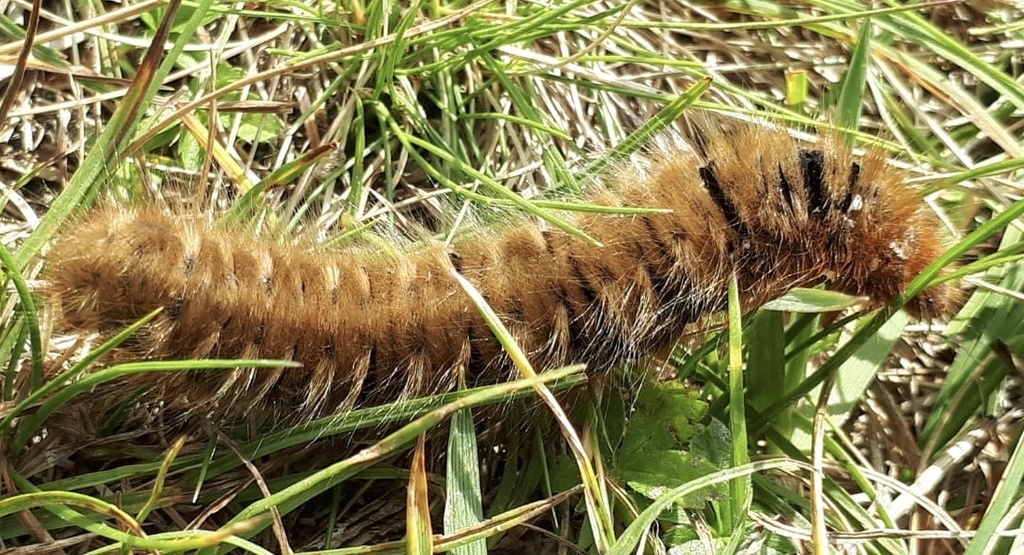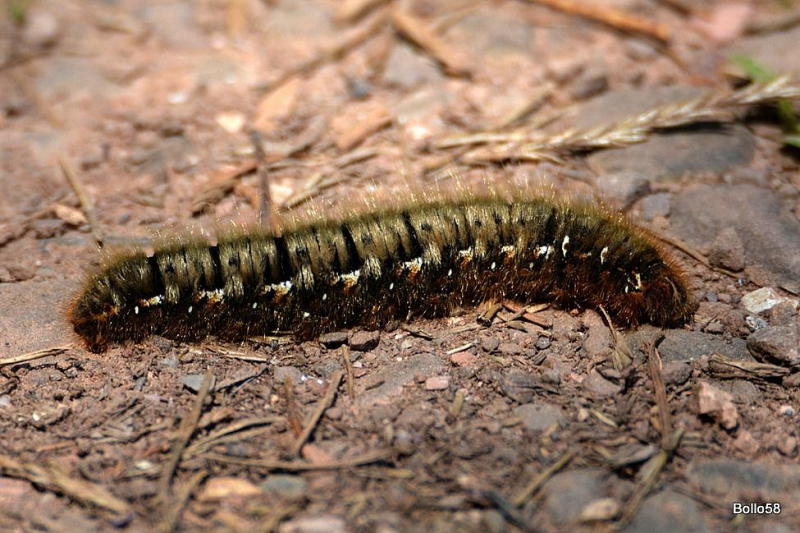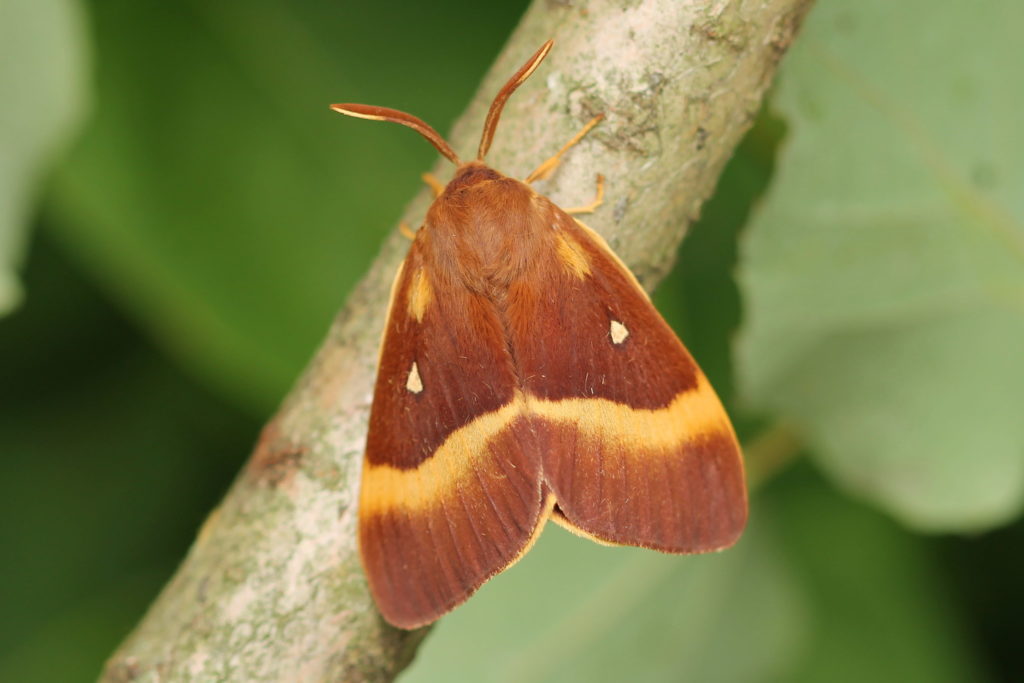Caterpillars on the move: Part 2
Here is the second of four articles highlighting moths whose caterpillars you have a good chance of seeing at this time of year. These moths overwinter as caterpillars and, with autumn upon us, they are on the move…
Oak eggar moth
This species, like the fox moth, is quite common in the wider countryside where it generally feeds on bramble and sallow; but on the heathland it feeds on heather and bilberry.
The caterpillars change colour as they mature. Earlier in the year it would have looked like this:

Oak eggar moth caterpillar © romanok66
But by October it is darker with black rings and a broken white stripe along each side:

Later caterpillar © Chris Bollen
They emerge in the spring and form a cocoon in the shape of an acorn, hence the name oak eggar – other than that, it has no association with oak trees!
Adults emerge in May and the males are very strong and swift day-flyers.

Adult © Andrey Ponomarev
ID tip: White dots on the forewings separate it from yesterday’s featured fox moth.
Find out more on Butterfly Conservation’s website: Oak eggar moth.
Warden Mike
#MoreThanJustNightjars
